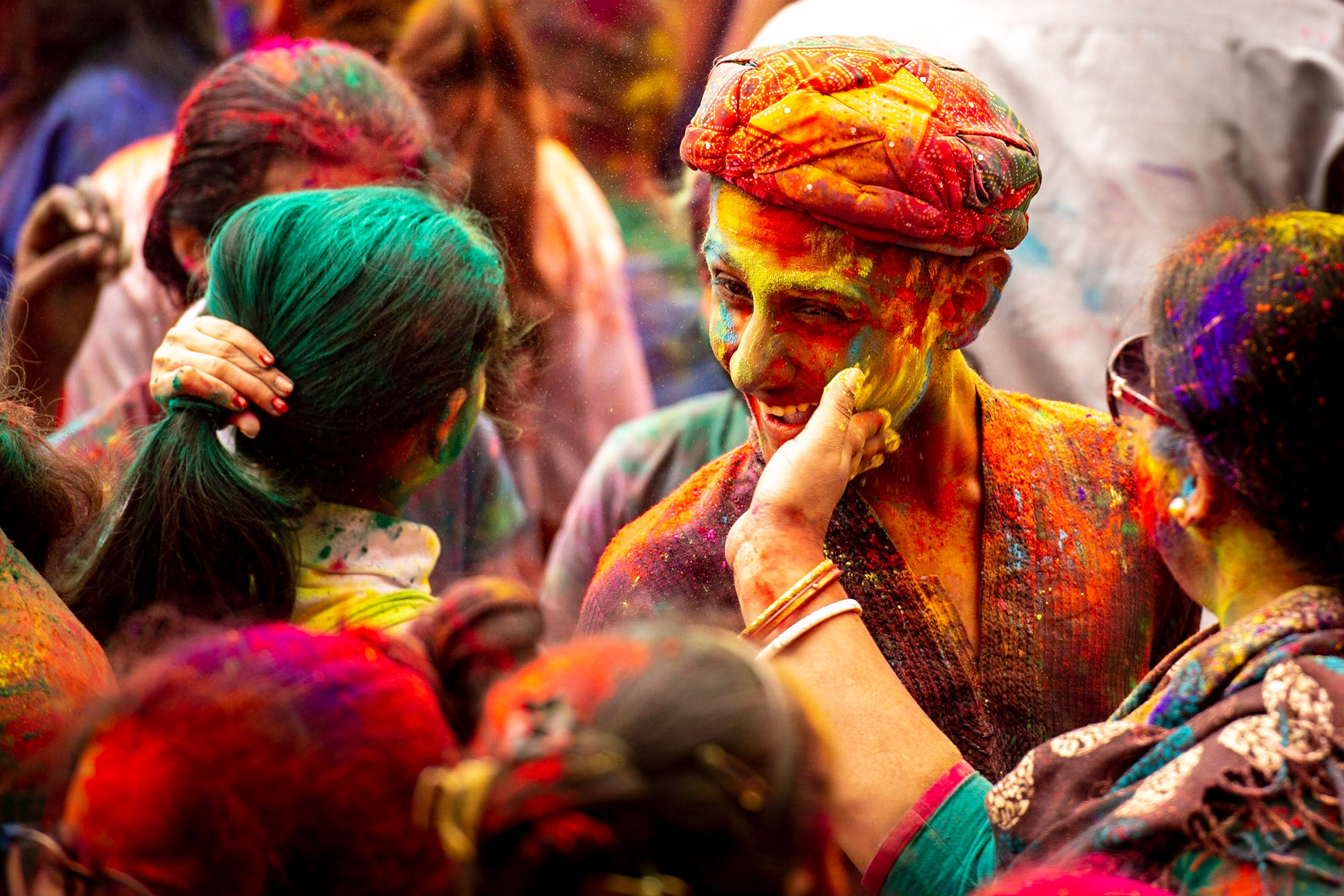
Holi Festival, Shrinathji Temple, Manama, Bahrain
Hidden away in a narrow alley of Manama Souk, Bahrain, the Shrinathji Temple, a heritage site established in 1817, comes alive with vibrant energy during the Holi festival. Dedicated to Lord Shrinathji, a youthful manifestation of Krishna, the temple, constructed by the Thattai Hindu community who migrated from Sindh before the partition of India, provides a sacred yet lively setting for this celebration of color and unity.
In these stills, I sought to capture not only the spirited essence of the festival but also the beautiful diversity of participants—men, women, and children of all ages immersed in the joy of the moment. The contrast of the temple’s deep historical roots against the explosion of color and emotion during Holi weaves together tradition and festivity, creating a visual narrative of community, spirituality, and celebration.

Castle Market, Sheffield: The Final Weeks
As Castle Market neared its 2013 closure, it remained a lifeline for Sheffield’s community—where generations shopped, connected, and thrived. Built-in 1959 atop the ruins of Sheffield Castle, the market’s worn stalls and dim, bustling corridors felt timeless, brimming with local flavour. Shoppers of all kinds—from lifelong residents to students seeking budget finds—filled its aisles, greeted by traders who had spent decades building not just businesses but friendships and memories.
These images capture Castle Market’s final heartbeat, preserving the portraits and personalities that filled its aisles daily. Now replaced by the sleek Moor Market, Castle’s closure left a void for many who valued its history, resilience, and authenticity.
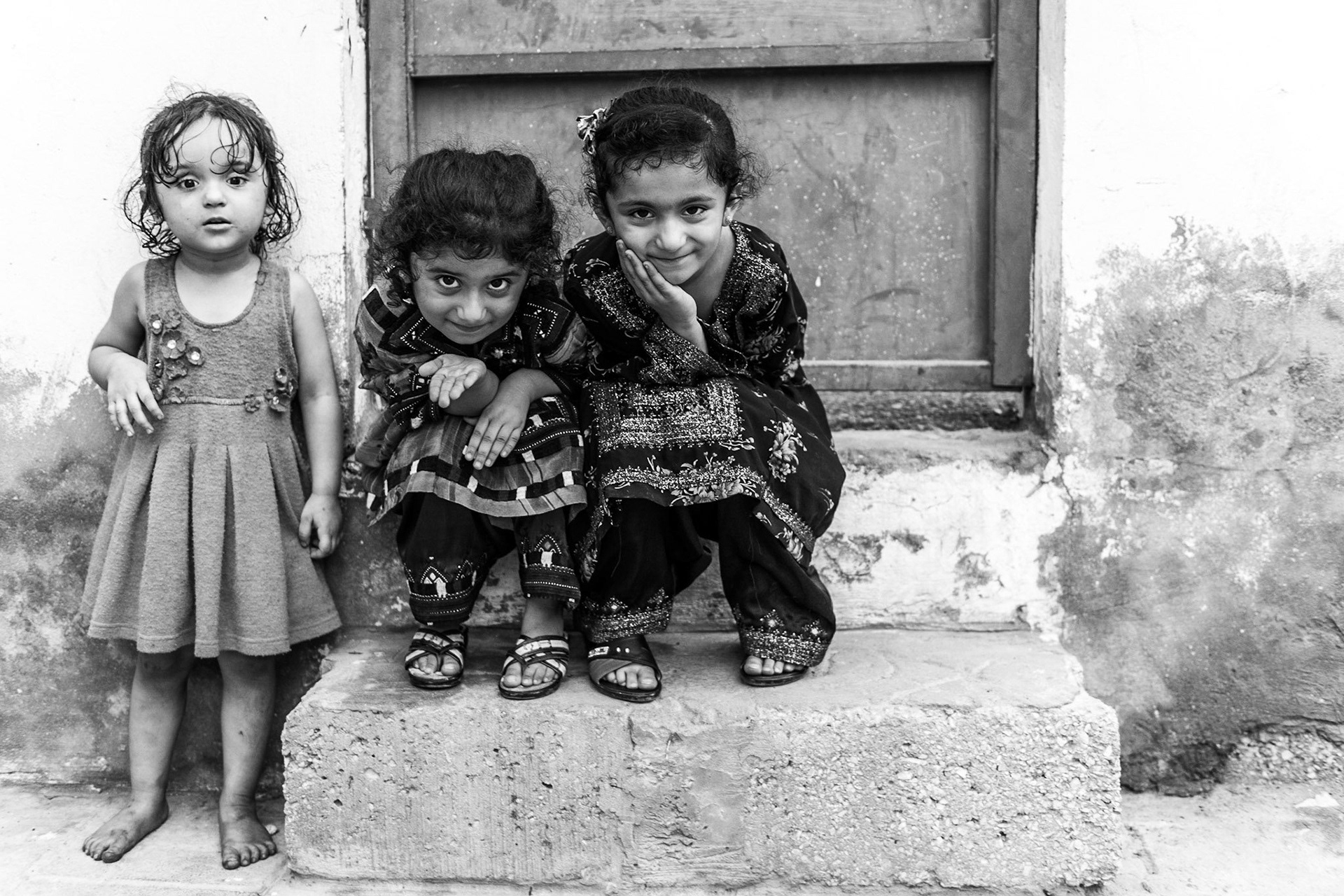
Streets of Muharraq, Kingdom of Bahrain
The Project "Streets of Muharraq", is from an ongoing larger body of work, A "Portrait of Bahrain" which is my attempt to capture the diversity of culture, religion, the old and young, contemporary and traditional, all of which inform the rich tapestry of Bahrain.
Walking the streets of Muharraq at different times of the day is a way of getting to know the ebbs and flows of people who work, live, shop and visit the narrow streets and courtyards found there.
The changing light as the sun rises from the East and sets in the West creates playful shadows and light wells in the nooks and crannies of the labyrinth that is old Muharraq. It is this combination which forms the basis of where I point my camera. Sometimes through interaction with the characters that occupy the streets, sharing stories or simply greeting one another, other times it's the way the light falls or the juxtaposition of people in the scene
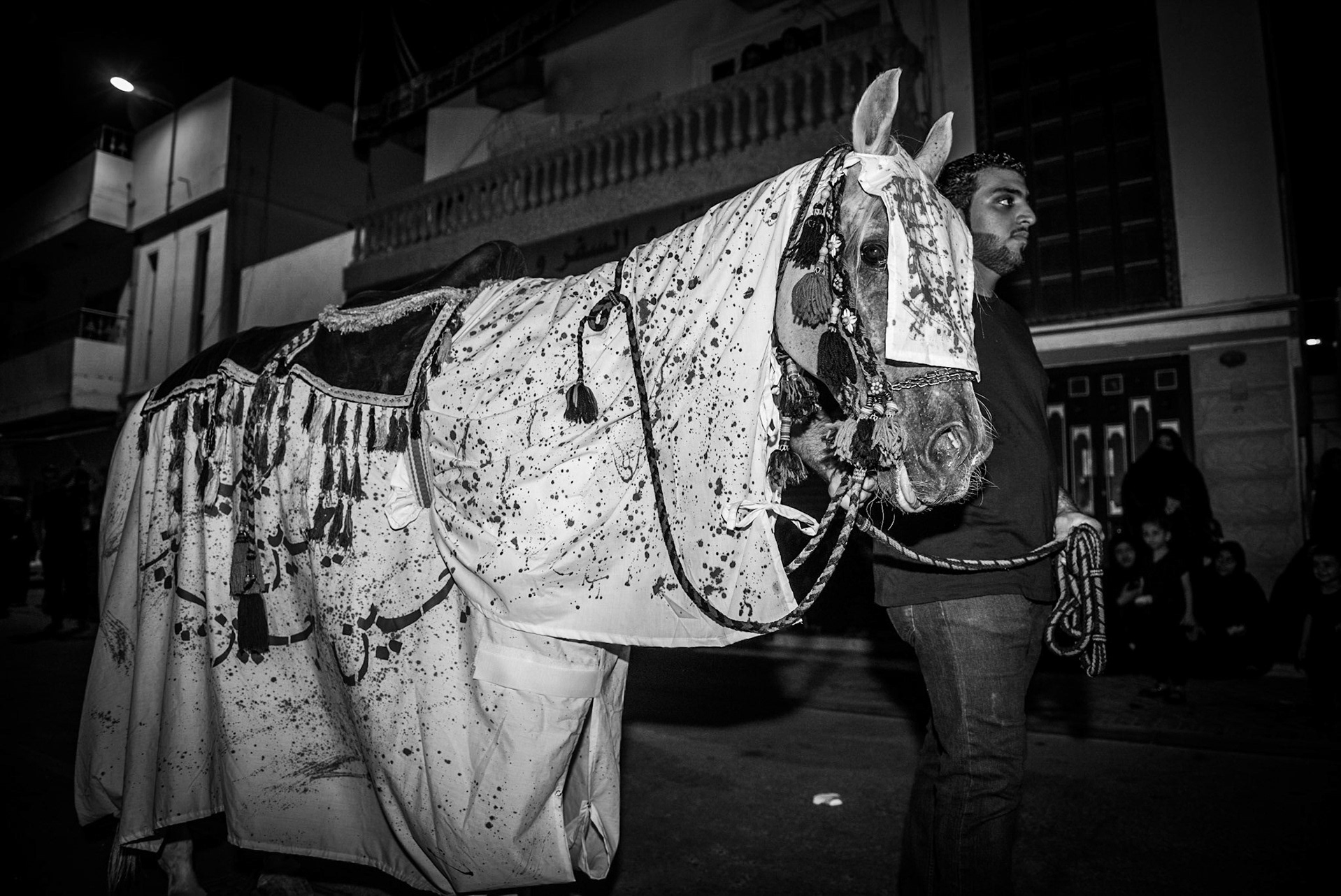
Ritual mourning, Ashura in Karbabad, Bahrain
These images, taken in Karbabad during the Ashura of 2015, offer a unique and intimate glimpse into one of the most important commemorations in Shia Islam. Ashura, which means “the tenth” in Arabic, refers to the 10th day of Muharram, the first month of the Islamic lunar calendar. This day marks the martyrdom of Imam Hussein, the grandson of the Prophet Muhammad, in 680 AD at the Battle of Karbala. His death is mourned by millions around the world as a symbol of resistance against oppression and the struggle for justice.
The quiet dignity and solemnity of the rituals in Karbabad emphasize symbolic acts of remembrance over physical displays of pain. Particularly striking are the young participants using light chains, or Zanjeer, without blades, in a symbolic gesture that connects them to the larger tradition of mourning. These lighter Zanjeer, used by children and adults alike, demonstrate a form of devotion that is deeply rooted in spirituality and reflection, rather than physical self-harm. This challenges common misconceptions about the ceremony and highlights the diversity of its practice.
The photographs capture a range of emotions across different ages and genders—young children learning from their elders and men performing rhythmic chest beating. These moments are infused with a deep sense of community and shared purpose. The streets of Karbabad, filled with people coming together in unity, provide a localized context that emphasizes the peaceful and reflective nature of Ashura as observed here.
From the serene faces of the elderly, shaped by years of ritual, to the curiosity and reverence of the younger generation, these images not only document the rituals but also tell a broader story of faith, memory, and cultural identity. They reveal the subtle yet powerful ways Karbabad’s cultural identity infuses the universal story of Ashura with a deeply personal touch.
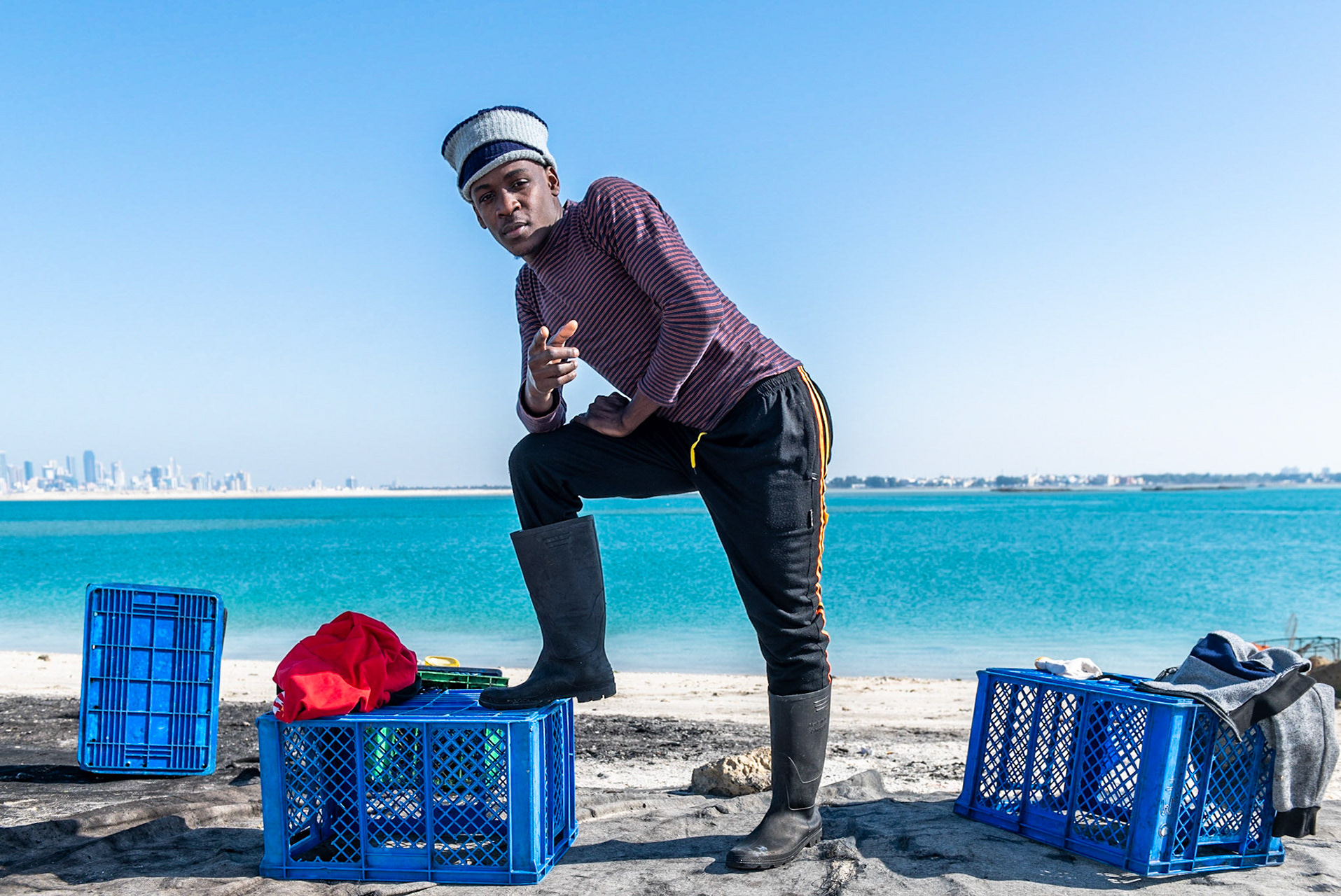
Beyond the Islands: Stories of Migrant Workers
A series of portraits of migrant workers helping to land and package blue crabs on Nurana Islands, a group of 2 artificial islands to the east of Northern City in the archipelago of Bahrain, which lie 9 km (5.6 mi) west of the capital. The workers in this series are from Bangladesh, India, Uganda and Kenya. They all regularly send money back to their families in their respective countries while maintaining a minimal amount to get by.

Gargee'an in Karbabad, Bahrain
Gargee'an is a vibrant and joyful celebration in Karbabad, Bahrain, during the month of Sha'ban in 2016. This festive tradition, observed in various Gulf countries, marks the halfway point of the Islamic month of Sha'ban, leading up to Mid-Sha'ban. It holds cultural significance as a time for community bonding and preparation for the upcoming holy month of Ramadan.
Children excitedly collect sweets from elders, a hallmark of Gargee'an, as they parade through the village streets. Dressed in colorful clothing, they engage in playful rituals, filling the air with laughter and excitement. The streets and buildings are adorned with bright lights, creating a warm and festive atmosphere that transforms the village into a lively gathering space.
As the evening progresses, the playful energy intensifies, with children covering each other and even cars in foam—a modern twist on the age-old tradition. The event fosters a sense of togetherness, where both young and old come together to enjoy free food, sweets, and the joy of celebration.
Gargee'an showcases the deep cultural roots of Karbabad, where traditions are passed down through generations. It highlights a side of Bahraini life that is full of warmth and generosity, serving as a reminder of the importance of unity and shared heritage in the lead-up to Ramadan.
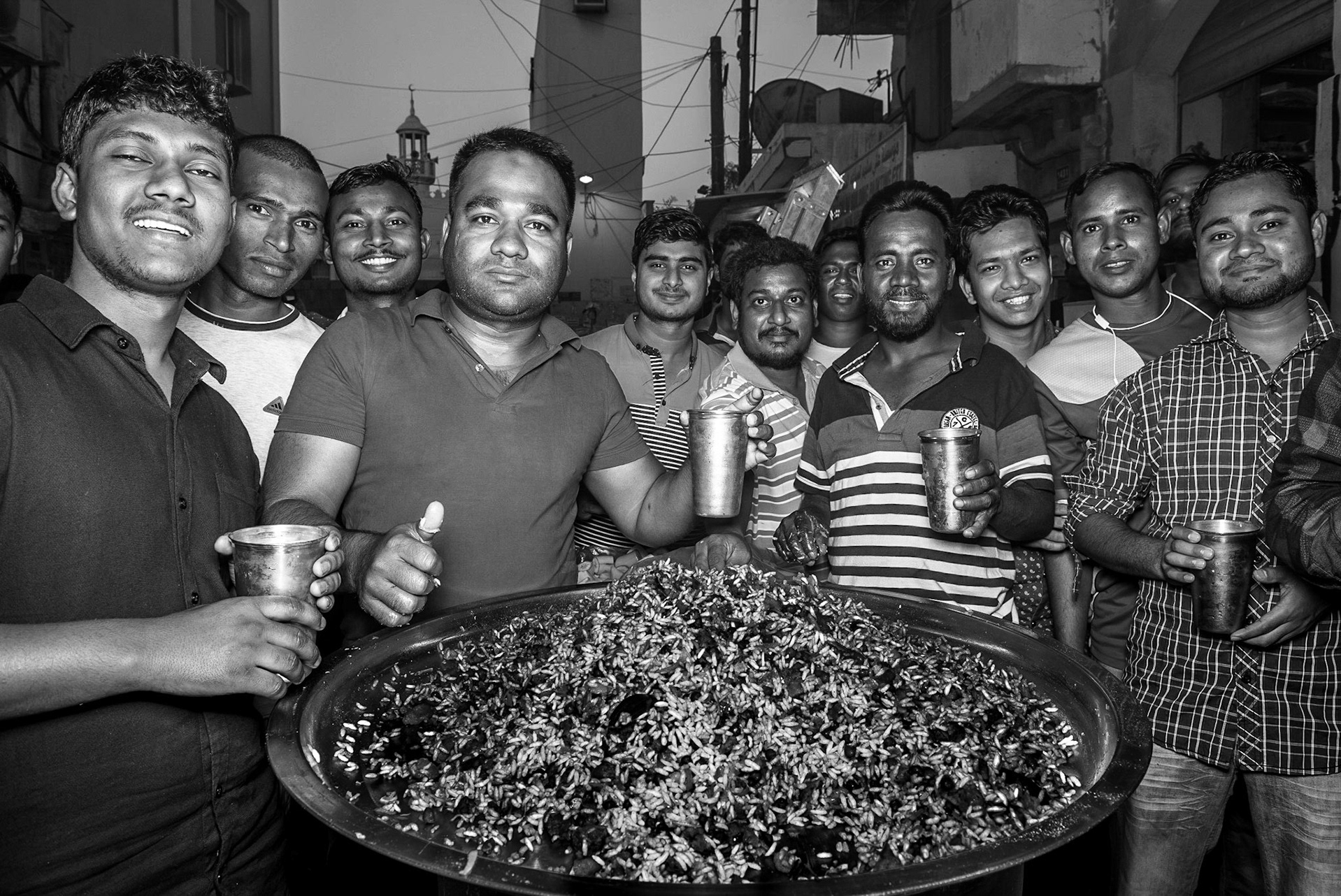
Gathering at Sunset: Iftar in Bahrain’s Bustling Souks
This series of photos captures the spirit of Iftar, the meal with which Muslims break their fast during the month of Ramadan. Taken in and around the bustling souks of Muharraq and Manama, these images document the moments just before and after sunset, as the call to prayer for Maghreb signals the end of the day's fast.
Ramadan, a month of deep spiritual reflection and community, sees people from all walks of life come together to share in the simple yet profound act of breaking their fast. These photos highlight the intimate, everyday settings of Fatoor (Iftar) — from small, everyday shops to open-air locations in the heart of Bahrain's traditional markets. The scenes show people gathering in groups, seated on the ground or around makeshift tables, united in faith and tradition.
From the traders closing their stalls to join in the communal meal to families and friends sitting side by side, these images reflect the harmony and shared experience that characterises Iftar in Bahrain. The souks, usually busy with commerce, are transformed into spaces of togetherness and quiet joy, where the sounds of the city soften, giving way to the sacred moment of breaking the fast.
These photographs tell a story not just of food and ritual, but of connection, unity, and the deep cultural significance of Ramadan in the heart of Bahrain’s vibrant markets.
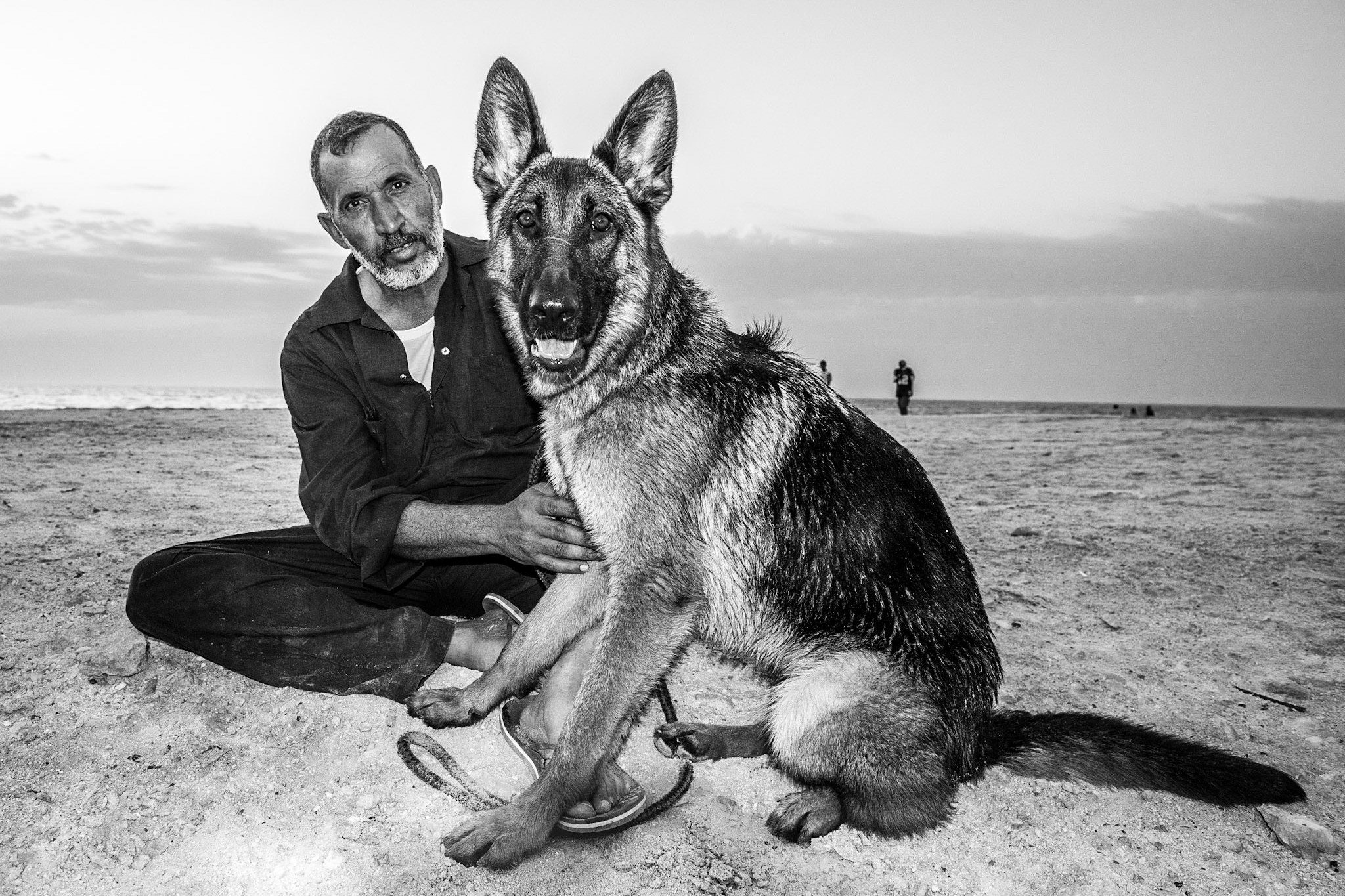
Al Jazair Beach: Dogs and Their Humans
This small collection offers an intimate glimpse into the lives of dog owners I encountered while strolling along Al Jazair Beach in Bahrain. Each portrait reflects the unique bond between the dogs and their humans, revealing moments of companionship, joy, and quiet connection.
These encounters, sparked by simple conversations along the shore, are part of a broader exploration of life in Bahrain—a study of the relationships, routines, and personalities that animate its landscapes. Through these images, the beach becomes more than a backdrop; it transforms into a shared space of interaction and reflection, capturing the subtle yet profound stories of those who walk it daily.
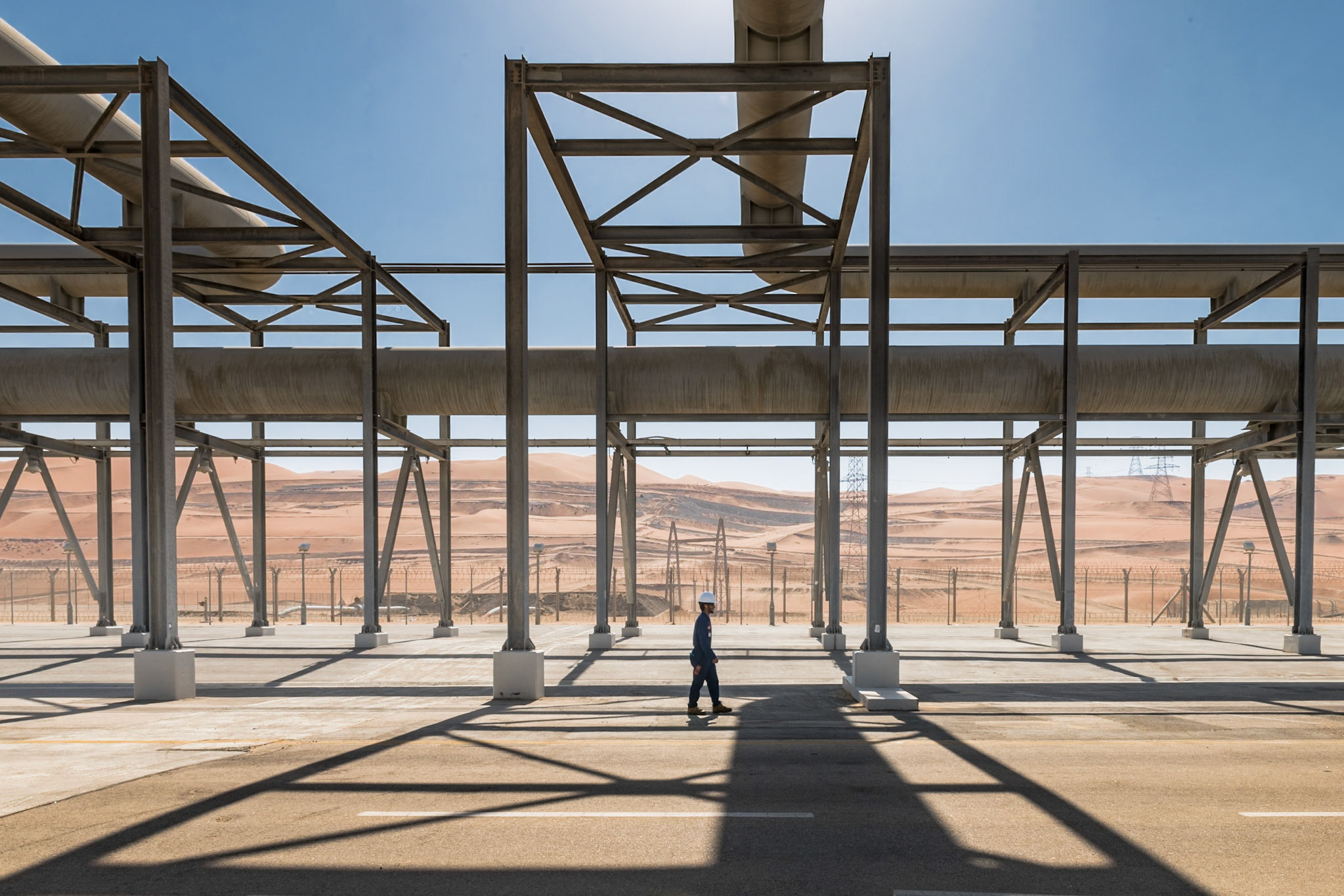
Shaybah, The Empty Quarter, Arabia

The Fishermen of Yanbu: Tradition Empowered
This collection captures the lives of fishermen in Yanbu, Saudi Arabia, who have been empowered through a community initiative led by Saudi Aramco. In partnership with the Saudi Border Guard, the Ministry of Environment, Water and Agriculture, and Nesma Holding Company, Aramco has provided local fishermen with new boats and essential equipment, enhancing their ability to sustain their livelihoods and support their families. 
The photographs document the daily routines and enduring spirit of these fishermen as they navigate the Red Sea waters near Yanbu. This initiative not only strengthens the local fishing industry but also fosters economic growth and community resilience, reflecting a harmonious blend of tradition and progress.
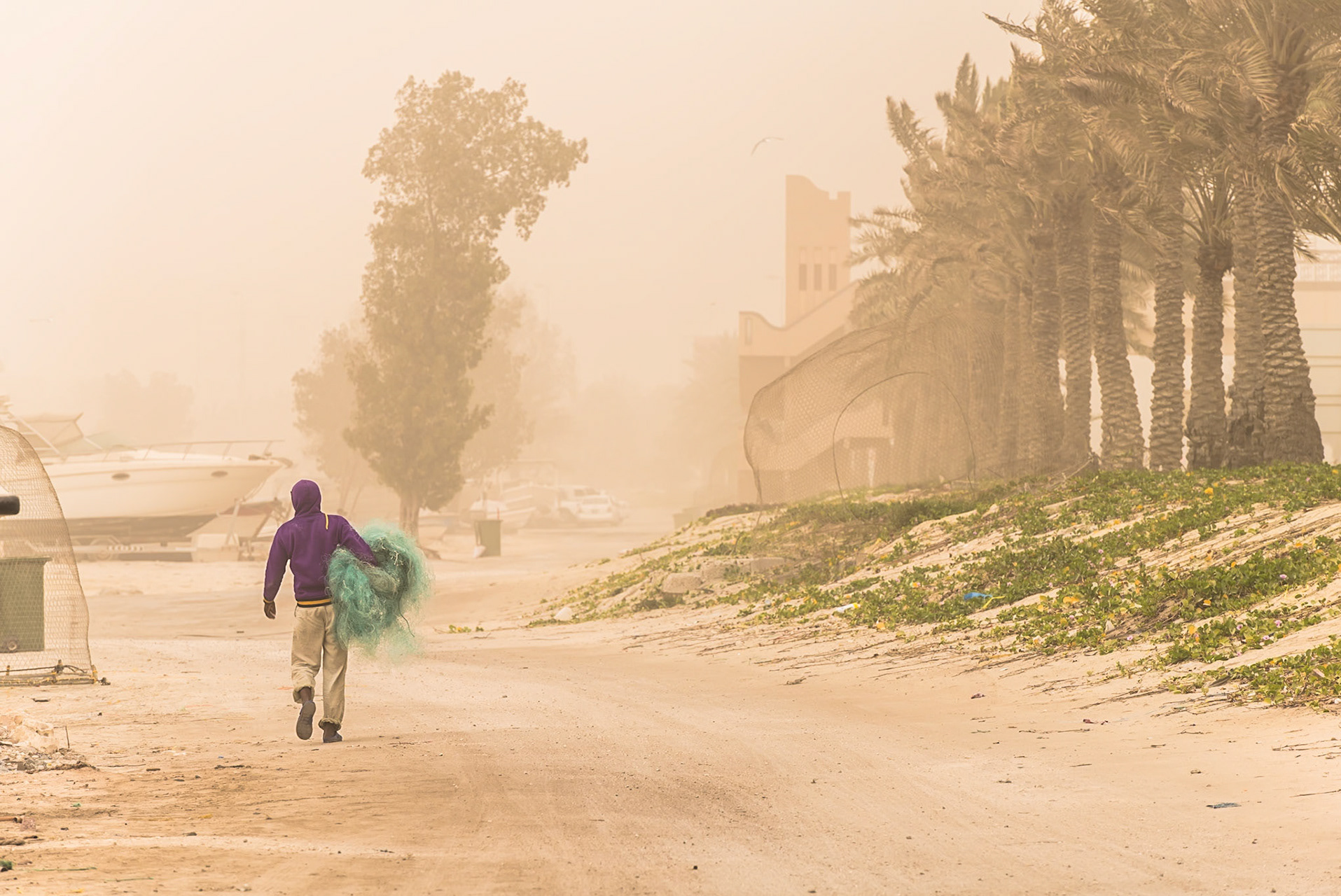
Sandstorm Stories: Fishermen of Muharraq
This series captures the haunting beauty of Muharraq Beach in Bahrain during a sandstorm. As I strolled along the shoreline, the storm created an eerie, almost surreal atmosphere, shrouding the landscape in a dusty haze.
Despite the challenging conditions, fishermen remained steadfast in their work, their silhouettes blending into the muted, windswept surroundings. The images reflect a striking contrast between human resilience and the stark, otherworldly environment of the storm.
Through this collection, I aim to document not only the visual impact of the storm but also the determination of those who continue their routines amid the harshest elements, offering a glimpse into life shaped by both nature and necessity.

Grounded Lives: Workers in Bahrain’s Fertile Fields
This series captures the lives of workers tending the allotment gardens located near the end of Hakeel Highway, close to Bahrain Fort (Qal’at al-Bahrain). These fertile plots are sustained by natural freshwater sources and have long been a vital part of Bahrain’s agricultural landscape.
The individuals in these photographs, often of immigrant backgrounds, dedicate their labor to maintaining the land. Their work is a testament to resilience and adaptability, as they balance the challenges of sustaining both their livelihoods and the land itself.
This collection focuses on the people and their connection to the earth, highlighting the unseen efforts that continue to shape this historically rich corner of Bahrain. Through these images, I seek to document the quiet strength and significance of those who keep these allotments thriving.

A’ali Pottery: Bahrain’s Living Craft
This series documents one of the last remaining pottery workshops in A’ali, Bahrain, a village steeped in the tradition of handcrafted ceramics. The photographs capture not only the artisans at work, shaping clay with skill and precision, but also the quiet, timeless essence of the workshop itself — the earthy textures, soft light filtering through the space, and the rows of pots and ceramics in various stages of creation.
A’ali’s pottery tradition, which dates back centuries, is intertwined with Bahrain’s history and cultural identity. The village is known for its unique techniques and distinctive clay, shaped by both heritage and the artisans’ enduring dedication. These workshops, often located near ancient burial mounds, hold echoes of a craft that has stood the test of time.
Supported in part by the Bahraini government through initiatives aimed at preserving cultural heritage, the pottery workshops of A’ali are a reminder of the beauty in traditional craftsmanship. This work seeks to honour both the people and the spaces that sustain this craft, offering a glimpse into the enduring art of pottery in Bahrain.

“Wheels of Beijing: Everyday Lives in Motion”
This small series offers a glimpse into the vibrant world of 2- and 3-wheeled transport in Beijing, capturing the diverse characters, jobs, and daily chores woven into the fabric of the city’s streets. From delivery drivers navigating narrow alleys to street vendors balancing goods on makeshift carriers, these images reveal a dynamic interplay of resilience, resourcefulness, and urban life.
As the beginnings of a broader project, this work sets the stage for a deeper exploration of the stories and routines behind these vehicles, which serve as lifelines for many in Beijing. Through these scenes, I aim to document the ingenuity and spirit of those who keep the city moving, one wheel at a time.
